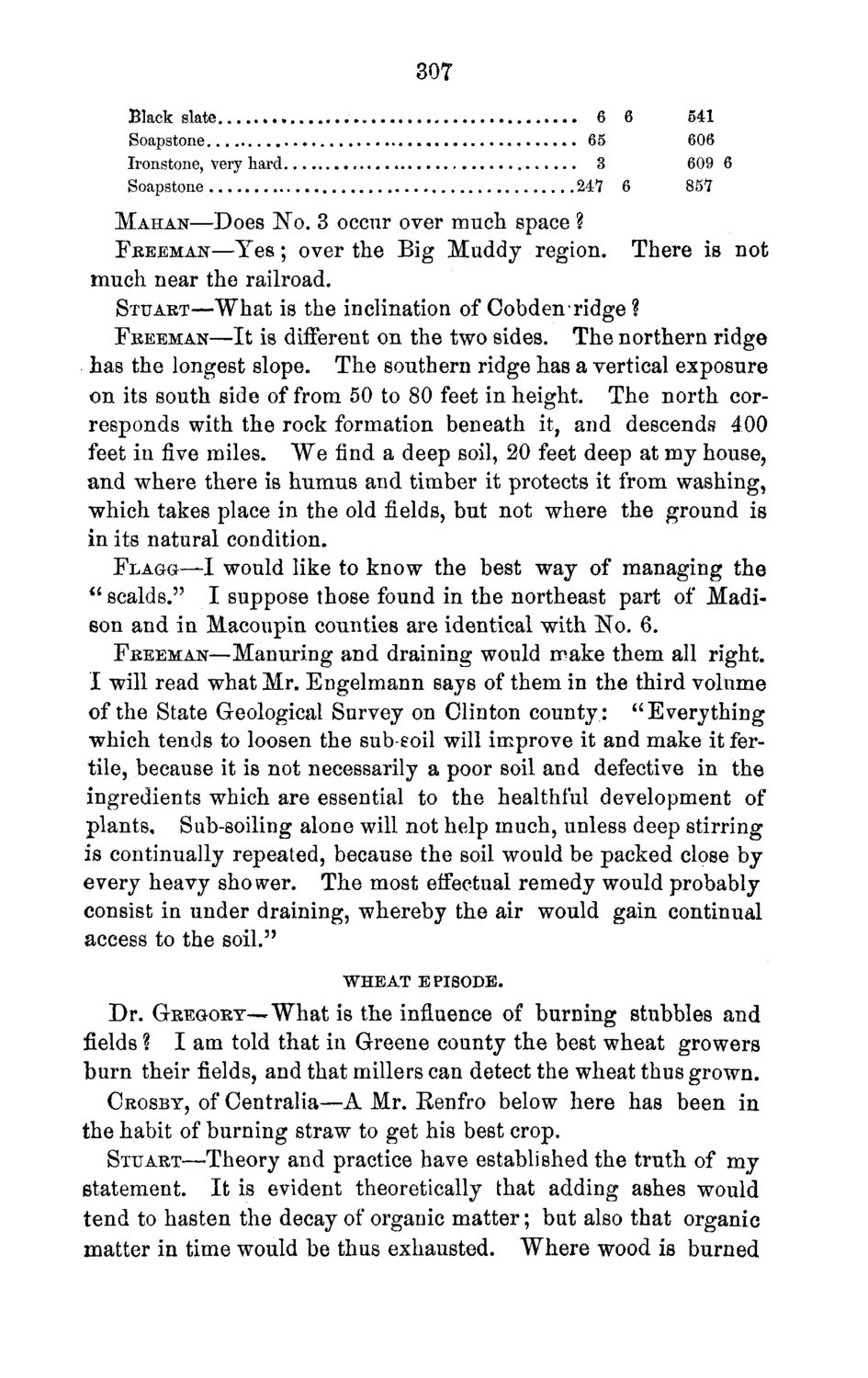| |
| |
Caption: Board of Trustees Minutes - 1870
This is a reduced-resolution page image for fast online browsing.

EXTRACTED TEXT FROM PAGE:
307 Black slate Soapstone Ironstone, very hard Soapstone • , 6 6 65 3 247 6 541 606 609 6 857 MAHAN—Does No. 3 occur over much space ? FREEMAN—Yes; over the Big Muddy region. There is not much near the railroad. STUART—What is the inclination of Cobden* ridge ? FREEMAN—It is different on the two sides. The northern ridge has the longest slope. The southern ridge has a vertical exposure on its south side of from 50 to 80 feet in height. The north corresponds with the rock formation beneath it, and descends 400 feet in five miles. We find a deep soil, 20 feet deep at my house, and where there is humus and timber it protects it from washing, which takes place in the old fields, but not where the ground is in its natural condition. FLAGG—I would like to know the best way of managing the u scalds." I suppose those found in the northeast part of Madison and in Macoupin counties are identical with No. 6. FREEMAN—Manuring and draining would make them all right. I will read what Mr. Engelmann says of them in the third volume of the State Geological Survey on Clinton county: "Everything which tends to loosen the subsoil will improve it and make it fertile, because it is not necessarily a poor soil and defective in the ingredients which are essential to the healthful development of plants. Sab-soiling alone will not help much, unless deep stirring is continually repeated, because the soil would be packed close by every heavy shower. The most effectual remedy would probably consist in under draining, whereby the air would gain continual access to the soil." WHEAT EPISODE. Dr. GREGORY—What is the influence of burning stubbles and fields ? I am told that in Greene county the best wheat growers burn their fields, and that millers can detect the wheat thus grown. CROSBY, of Centralia—A Mr. Kenfro below here has been in the habit of burning straw to get his best crop. STUART—Theory and practice have established the truth of my statement. It is evident theoretically that adding ashes would tend to hasten the decay of organic matter; but also that organic matter in time would be thus exhausted. Where wood is burned
| |